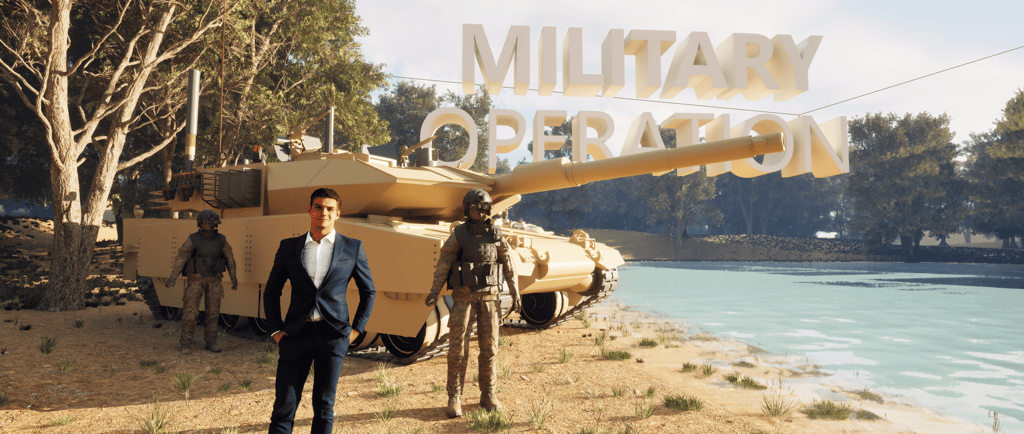Integrating the Virtual News Reporter into the Virtual World (Character Design)
For the purpose of testing the project's viability, a pre-made 3D model of an anchor was utilized. This allows us to focus on integrating and testing functionalities without the initial time investment in custom modeling.
SPRING QUARTER 2024
6/19/20242 min read


Steps for Integrating the Virtual Anchor:
Using a Pre-made Anchor Model: For the purpose of testing the project's viability, a pre-made 3D model of an anchor was utilized. This allows us to focus on integrating and testing functionalities without the initial time investment in custom modeling.
Importing the Model into Unreal Engine: The pre-made anchor model was imported into the project environment in Unreal Engine, with necessary adjustments made to materials and textures to achieve a realistic appearance.
Future Work:
Rigging and Animation
Once I was done with the basic stages, I proceeded with the advanced research stages. This was when I used Rokoko and motion capture technology to set up the anchor and rig the anchor with its respective joints to the nodes. Then I added the right motion to it, which came from the real world with the use of actors.
When you use motion capture for a character's movements, the limbs and joints of that character will move in a more natural way. Just the fact of motion capture makes the movements more realistic!
In the research stage, I calibrated the motions from the motion capture suits, which was quite tricky for the beginning. To help me achieve this, I found it useful to research online about best practices for the calibration of motion capture suits and how to optimise motion data for the virtual models, such as sources from Rokoko Motion Capture Documentation as well as Unreal Engine’s Animation and Rigging Toolkit.
Defining Movements and Behaviors
Using the Action Mapping and Sequencer tools in the Unreal Engine, I designed the movements and reactions of the anchor by scripting each actions such as talks, arms movements, and interactions with virtual objects in the same scene. For some complex interactions I had to write more elaborated scripts and make some fine-tuning which added more time to develop them. Research consisted in reading tutorials and documentation related to the development of scripts in both Action Mapping and Sequencer tools in the Unreal Engine, such as: Action Mapping Tutorial in Unreal Engine; Unreal Engine: Sequencer Documentation.
Future 3D Scanning and Custom Model
In this last stages, i will make a 3D individualized model of the anchor, using the 3D scanning technology, for a better representation and accuracy. After the some test using 3D scanning technology, a first attempt shown good results but an second attempt need more time to manage the amount of point for the geometry, to have a better detail.
After these scanning tests, starts investigations about 3D scanning technology, its advantages and how I will integrate in animation pipeline. For this research have been analyzed the World Wide Web, books about 3D Scanning Technology Reviews and 3D scanning integration workflow.
Incorporating AI
For subsequent iterations, I’ll train AI for the anchor to follow the events and “comment” on them live to viewers. I will employ the technique of behavior trees and decision-making algorithm to create dynamic and intelligent behaviors. The event got off to a good start, but complex decision-making algorithm needs to be fine-tuned in order to make natural and situational responses. As a reference, AI programming technique and implementation in similar apps have been used. References: AI Programming in Unreal Engine Behavior Trees and Decision-Making Algorithms in AI Development

